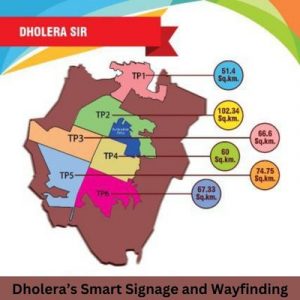In the age of smart cities and digital governance, security and surveillance systems play a pivotal role in ensuring the safety and well-being of citizens. Dholera, an upcoming smart city in the Indian state of Gujarat, is at the forefront of adopting advanced security measures. This blog post delves into the intricacies of Dholera’s security and surveillance systems, exploring how they contribute to creating a safe urban environment.
The Need for Advanced Security in Smart Cities
Smart cities like Dholera smart city are designed to be hubs of efficiency and sustainability. With the integration of information and communication technology (ICT), these cities promise enhanced quality of life, economic growth, and environmental sustainability. However, the dense population and technological infrastructure also make them susceptible to security threats. Hence, robust security systems are not just an option but a necessity.
Dholera’s Surveillance Infrastructure
Dholera’s surveillance infrastructure is a marvel of modern technology. It encompasses a network of high-definition CCTV cameras, drone surveillance, and automated number plate recognition (ANPR) systems. These tools are strategically placed throughout the city to monitor public spaces, traffic, and critical infrastructure.
Emergency Response
In case of an emergency, Dholera’s surveillance systems ensure a swift response. The command centre can quickly assess the situation using real-time data and coordinate with emergency services, such as fire, medical, and police, to manage the incident efficiently.
Drone Surveillance
Dholera employs drone technology for aerial surveillance. These drones are equipped with night vision and thermal imaging, making them effective for round-the-clock surveillance. They can access hard-to-reach areas and provide a bird’s-eye view of the city, which is invaluable during emergencies and for monitoring large public gatherings.
ANPR Systems
The ANPR systems in Dholera are designed to enhance traffic management and security. They automatically capture the registration numbers of vehicles, helping in tracking stolen vehicles and managing traffic violations. This system is integrated with the city’s traffic management centre, allowing for seamless coordination.
Data-Driven Security Approach
Dholera’s security apparatus is bolstered by a data-driven approach. The city’s command and control centre collects data from various sensors and surveillance devices. This data is then analyzed using advanced algorithms to predict potential security breaches and deploy preventive measures.
Predictive Policing
Predictive policing is a significant aspect of Dholera’s security strategy. By analyzing past crime data and patterns, the system can forecast crime hotspots and times. This enables law enforcement to be proactive and deploy resources more effectively.
CCTV Network
The CCTV network in Dholera smart city is extensive. Cameras equipped with facial recognition technology are installed at various points, including traffic intersections, public parks, and key buildings. They are capable of real-time monitoring and can swiftly identify suspicious activities or individuals, thereby enabling a quick response from law enforcement agencies.

Conclusion
Dholera’s security and surveillance systems are a testament to the city’s commitment to providing a safe and secure environment for its residents. By leveraging cutting-edge technology and a data-driven approach, Dholera is setting a benchmark for other smart cities globally. As we move towards an increasingly urbanized future, the lessons learned from Dholera’s security strategies will undoubtedly be valuable for urban planners and policymakers worldwide.
Privacy and Ethical Considerations
While Dholera’s smart city security and surveillance systems are state-of-the-art, they also raise questions about privacy and ethics. The city administration has put in place strict regulations to protect citizens’ privacy rights. Data is encrypted, and access is restricted to authorized personnel only. Moreover, there is a clear legal framework that governs the use of surveillance data, ensuring it is used solely for security purposes.




